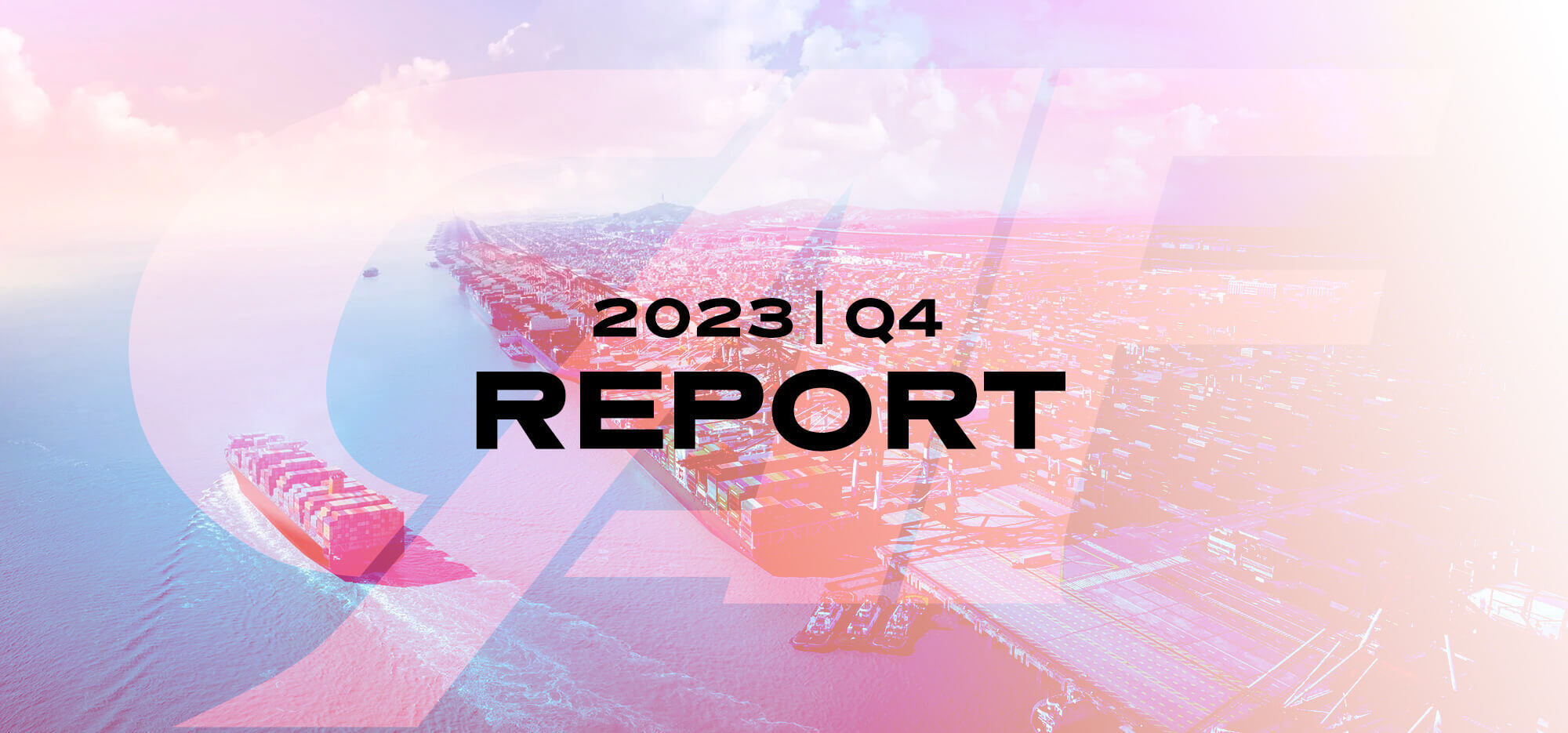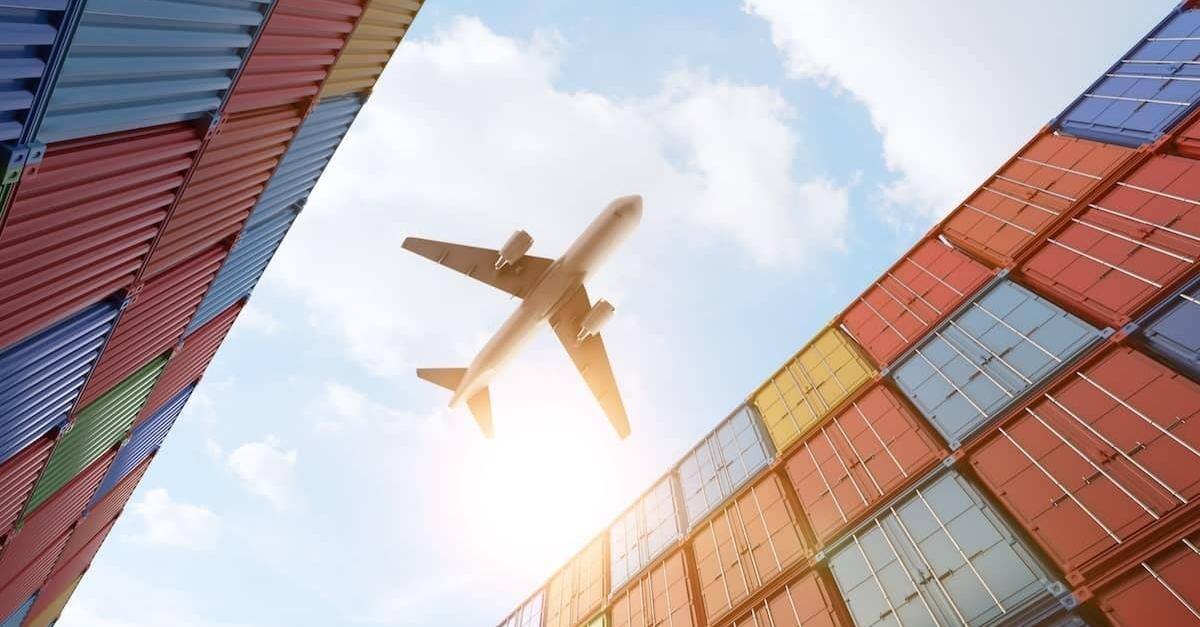Part 2: Outlook For 2024
Building upon our reflections in Part 1, where we delved into the complexities and triumphs of the 2023 shipping and logistics industry, we now turn our gaze to the future. Looking ahead, CAF Worldwide's President and CEO, Joe Barry, combines cautious optimism for 2024, along with a realistic assessment of the industry's trajectory.
The past year's experiences have laid a solid foundation for growth and innovation, and we anticipate a year ahead marked by expansion and robust demand. This growth is expected to be fueled by technological advancements, sustainability initiatives, and the ongoing adaptation to global market dynamics.
Technological Advancements and Market Dynamics
As we look ahead, the shipping industry stands on the cusp of significant changes and challenges.
The Rise of Sustainability Initiatives
One of the most significant trends Barry highlights is the growing emphasis on sustainability, especially in Europe. "Sustainability issues, particularly in Europe, could significantly impact the industry," he notes. The European Union is imposing strict regulations on carriers concerning emissions and the use of alternative fuels.
These regulations, although set with specific deadlines, may face delays, raising questions about the industry's readiness to transition to a greener operational model and the associated costs.
The Strategic Importance of the Panama Canal
Another area of focus is the Panama Canal, a critical juncture in global shipping routes.
"About 40 percent of cargo to the United States goes through the canal," Barry points out, adding that the efficiency and cost-effectiveness of this route make it a preferred choice for many. However, decreasing water levels pose a significant risk. If the situation at the canal does not improve, it could lead to logistical challenges, potentially overwhelming West Coast ports in the U.S. This scenario might necessitate a shift to the Mini Land Bridge strategy, involving the transportation of containers from the West Coast to the East Coast via rail. However, concerns arise regarding the current supply chain infrastructure's capacity to handle such a shift.
The Impact of Time and Expedited Delivery
Time remains a critical factor in the industry, with expedited delivery often taking precedence. Barry observes, "Routes that are faster, even if they are more expensive, are often chosen." This preference underscores the potential challenges the industry could face if disruptions occur, such as issues with the Panama Canal or other unforeseen crises. The industry's infrastructure and supply chain might struggle to adapt to these changes, necessitating innovative solutions and strategies.
Barry observes, "Routes that are faster, even if they are more expensive, are often chosen."
The Influence of Global Political Factors
Political events, including regional tensions and major political milestones, considerably influence the shipping and logistics industry. Notably, ongoing conflicts in the Red Sea, specifically the attacks by Yemen's Houthi movement on ships traversing this critical passageway, have significantly disrupted traditional shipping lanes. This geopolitical unrest has led to the rerouting of several shipping lines, now circumventing the Red Sea via the Cape of Good Hope to reach European destinations.
"The shifting dynamics in regions like the Red Sea, Ukraine, and the Middle East, especially during presidential election years, can have profound impacts on our industry," states Barry, emphasizing the necessity for the industry to remain vigilant and responsive to global political events.
This situation, particularly in the Red Sea, is expected to continue affecting the shipping and logistics industry well into 2024 and potentially beyond, underscoring the far-reaching effects of geopolitical factors.
AI and Technological Advancements
One of the most significant developments Barry anticipates is the influence of AI on the transportation industry.
"The transportation industry will be significantly impacted by AI," he states. “This shift might not be immediate but is inevitably on the horizon. The potential for AI to introduce efficiencies and automation into the market is substantial, promising to revolutionize the way the industry operates.”
Barry believes we are looking at a timeline not too far in the future, certainly within the next decade. However, Barry cautions that the logistics field is replete with nuances and dynamic elements that must be considered when integrating AI.
"Logistics is a very dynamic field with many nuances," he explains, suggesting that “while AI has the potential to encapsulate these dynamics, it requires careful and thoughtful implementation.”
Addressing Global Technological Disparities
Another critical factor Barry highlights is the disparity in technological advancement across different markets. Not all countries are on the same technological footing as China or the U.S., with many imports coming from developing nations facing their own challenges, such as unrest, lack of technology, and underdeveloped logistics infrastructure.
"Many imports come from developing countries with their own set of challenges," Barry points out. “This reality underscores the limitations that might arise from the uneven nature of global development, impacting the extent to which technological advancements can be leveraged globally.”
Balancing Innovation with Practical Limitations
As the industry looks to embrace technological advancements and AI, Barry emphasizes the need to balance innovation with the practical limitations posed by the diverse global landscape. While technological improvements promise significant enhancements to the industry, their application and effectiveness will vary based on regional capabilities and infrastructure.
The Influential Role of Global Factors and Consumer Behavior
As the shipping industry looks towards 2024, it faces a landscape increasingly influenced by global economic conditions, geopolitical events, and evolving consumer behaviors.
The Unpredictability of the Consumer Market
The consumer market in recent years has become increasingly unpredictable, a shift Barry attributes to the influence of social media.
"The consumer market these days is very tricky," he remarks, highlighting the significant impact of platforms like TikTok on purchasing patterns. This evolution in consumer behavior is reshaping market dynamics, presenting both challenges and opportunities, especially for smaller importers. Social media platforms have leveled the playing field, enabling smaller entities to gain visibility and compete in a domain once dominated by larger importers.
One of the key challenges for the shipping industry is adapting to these fast-changing consumer behaviors. The industry is striving to understand and respond to these shifts, which are complex and rapidly evolving.
"Everyone in the industry is trying to figure out how to adapt to these evolving consumer behaviors," Barry notes.
The Path Toward Sustainability and Social Responsibility in the 2024 Shipping Industry
The conversation around sustainability and social responsibility within the shipping industry is gaining momentum as we approach 2024.
The Complexities of Implementing Sustainability
According to Barry, "the challenge with sustainability and social responsibility in the industry is complex.” As a freight forwarder, CAF Worldwide's role is non-asset based, making them reliant on carriers and truckers who hold the reins in implementing sustainable practices. This dependency means that while the industry can aspire to more sustainable practices, the actual implementation largely depends on these carriers and their willingness to evolve.
Currently, there is a disparity between the demand for sustainable services and the actual steps taken to achieve them.
Barry suggests that while there is a growing conversation about sustainability, it has not yet become a predominant driving force in importers decisions.
The Slow Transition to Emerging Technologies
The shipping industry is on the cusp of a technological revolution with the emergence of hydrogen-powered vessels and electric trucks. However, Barry emphasizes that "we are still at the very beginning of this journey." The transition to these more sustainable technologies is gradual, and mainstream adoption remains in the distant future.
The Role of Packaging Efficiency
Another area ripe for improvement is packaging efficiency, particularly relevant to the distribution and packaging industries. Barry suggests that progress in this sector is closely tied to regulations and standards set by countries and major importers. This aspect of sustainability highlights the broader scope of environmental responsibility beyond just transportation.
Barry concludes by reflecting on the fragmented approach to sustainability within the industry. "The industry is fragmented in its approach to sustainability," he states. “While European initiatives are driving much of the progress, a globally unified approach to sustainability standards remains elusive.”
The industry, therefore, continues to rely on carriers to lead the way in adopting more efficient and sustainable methods.
"The industry is fragmented in its approach to sustainability," he states. “While European initiatives are driving much of the progress, a globally unified approach to sustainability standards remains elusive.”
Envisioning the Path Ahead: A Cautiously Optimistic Outlook for 2024 in Shipping
Barry's outlook for 2024 is one of cautious optimism.
“I envision 2024 as a year that will likely outpace its predecessor in terms of growth and demand,” he says.
However, he also tempers this optimism with a note of realism, suggesting that while the year may start slowly, it is expected to gain momentum as it progresses.
Anticipating Solid Growth
The anticipation for 2024 is not just for a recovery but for solid growth. Barry believes that "2024 will be a stronger year with more demand," a perspective shaped by the trends and shifts observed in the recent past. He foresees a gradual build in the market's strength, leading to what could be a substantial year for the industry.
Overall, the outlook for 2024 is positive, underpinned by a sense of cautious yet tangible optimism. "We are definitely optimistic about what 2024 has to offer," Barry concludes, capturing the industry's forward-looking spirit. This optimism is grounded in the industry's adaptability, its evolving response to global challenges, and its capacity for innovation and growth.
Topics: News












 Copyright 2025 CAF Worldwide. All rights reserved.
Copyright 2025 CAF Worldwide. All rights reserved.